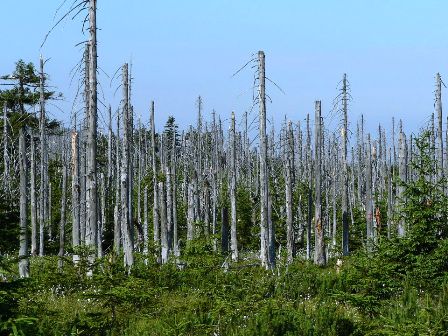- Series:God’s Design, Plants, Transcript English
Isaiah 51:6
“Lift up your eyes to the heavens, and look upon the earth beneath: for the heavens shall vanish away like smoke, and the earth shall wax old like a garment, and they that dwell therein shall die in like manner: but my salvation shall be for ever, and my righteousness shall not be abolished.”
One big issue these days is acid rain falling in industrialized areas of the world. Much of the acid in rain comes from nitric acid and sulfuric acid, which are released as a result of automobile exhaust and factory smokestacks. While rainwater needs to be somewhat acidic to dissolve minerals so they can be taken up by plant roots, too much acid is damaging buildings, automobiles, forests and lakes in some areas of the world.

After more research, scientists discovered that the Amazon acid rain problem was being caused by ants! There is a huge population of formicine ants in the Amazon basin. These ants produce formic acid, which they store in a pouch and use both to defend themselves and to communicate with each other. Each ant might carry enough formic acid to make up five percent of its weight, which doesn’t seem like very much. But when you multiply that by 100 trillion ants, you have enough formic acid to create an industrial sized pollution problem!
There are indeed problems on this Earth. The Bible warns us that the Earth is wearing out like a garment. Our Creator will soon come for us, and then there will be a new heaven and a new Earth!
Prayer:
Lord, I look forward to Your return to take me and all believers to Yourself forever. By Your Holy Spirit, enable me to make every day of my life a day of preparation for You. Amen.
Notes:
“100 trillion ants drop acid.” Discover, Sept. 1987. p. 8.
